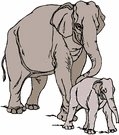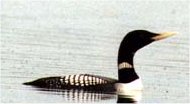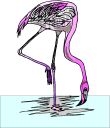
Worksheets and No Prep Teaching Resources
Reading Comprehension Worksheets
Animal Themes
Birds
Oceans

Animal Themes
 Worksheets and No Prep Teaching Resources Reading Comprehension Worksheets Animal Themes Birds Oceans |
 Animal Themes |
| edHelper's suggested reading level: | grades 5 to 6 | |
| Flesch-Kincaid grade level: | 6.75 |
| Loons |

|
 1 Loons are gifted divers. When they dip below the surface, they hold their heads in line with their necks to minimize drag. Their muscular, webbed feet are set far back from their streamlined bodies. This maximizes thrust underwater (but hampers their ability to walk on land). Many of the hollow bones found in most birds have been replaced by solid ones, so they can sink better and faster. Thanks to all these unique traits, loons are able to remain submerged for more than a minute and dive to a depth of over 200 feet! Such accomplishments, undoubtedly, helped loons earn their nickname, diver.
1 Loons are gifted divers. When they dip below the surface, they hold their heads in line with their necks to minimize drag. Their muscular, webbed feet are set far back from their streamlined bodies. This maximizes thrust underwater (but hampers their ability to walk on land). Many of the hollow bones found in most birds have been replaced by solid ones, so they can sink better and faster. Thanks to all these unique traits, loons are able to remain submerged for more than a minute and dive to a depth of over 200 feet! Such accomplishments, undoubtedly, helped loons earn their nickname, diver. |
Create Weekly Reading Books
Prepare for an entire week at once! |
| Leave your feedback on Loons (use this link if you found an error in the story) |
 |
Animal Themes
|
 |
Birds
|
 |
Oceans
|
|
|